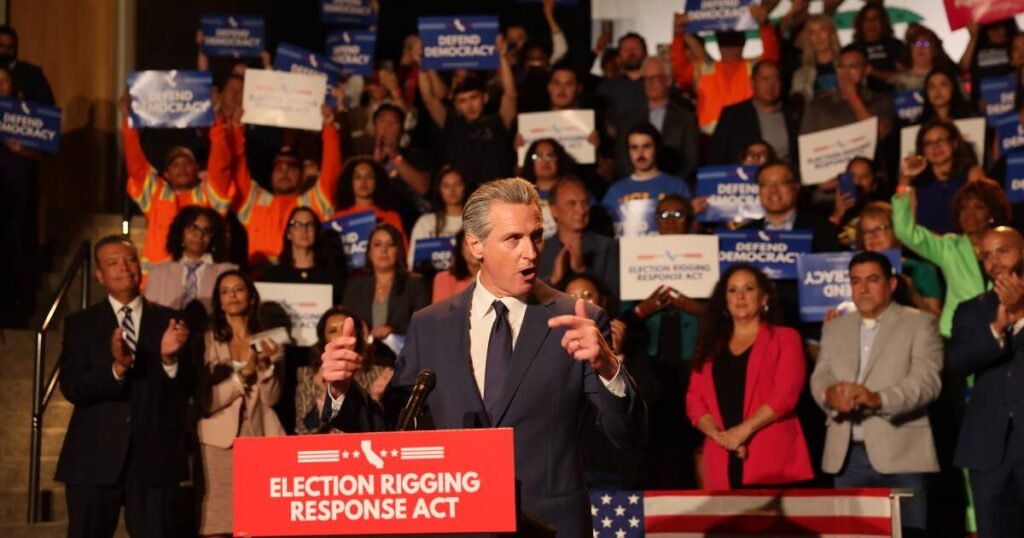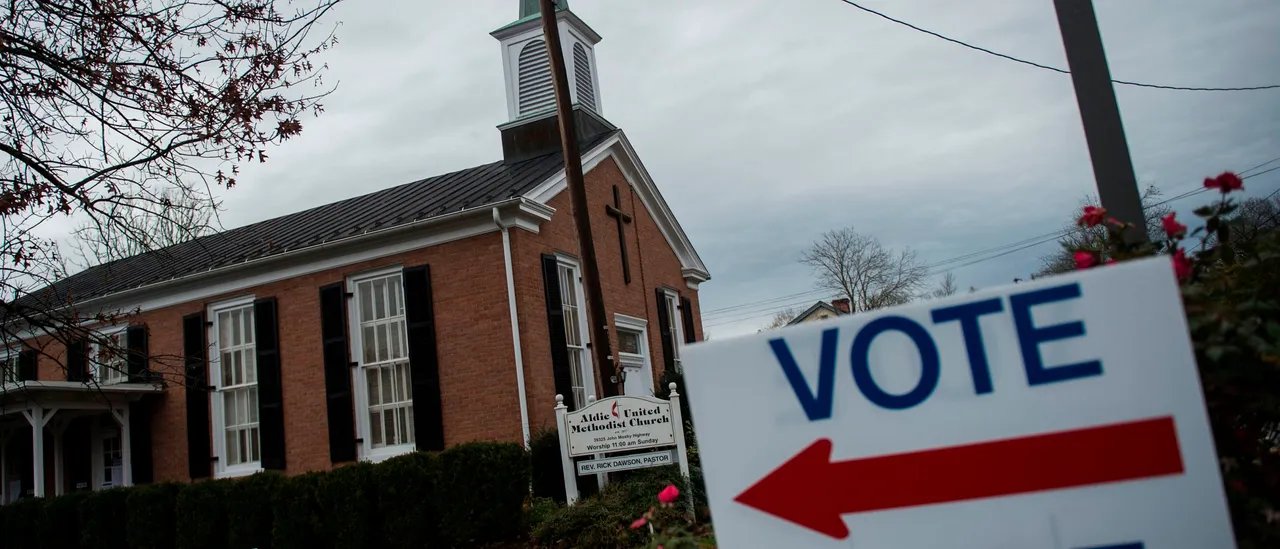California’s Redistricting Battle Heats Up
After fifteen years of California voters removing legislators’ power to shape their own districts, Governor Gavin Newsom and his Democratic allies are looking to regain that control.
The rezoning initiative set to be approved in Sacramento and brought to voters in November aims to reshape the political landscape of California for the next six years. This move is crucial for the Democratic Party, particularly with the upcoming 2026 midterm elections, affecting the trajectory of President Trump’s agenda.
The outcome in California resonates beyond state lines, leading to the downfall of some political figures while elevating others. Gavin Newsom has emerged as a significant figure in opposing Trump and rallying Democratic efforts across the nation.
A new map crafted by Democratic strategists was leaked and is anticipated to be shared with legislative leaders shortly. It’s scheduled for presentation during the special election on November 4th and includes plans for a constitutional amendment to nullify the voter-approved independent districting process from 2010.
This change is set to impact a vast area of California, stretching from the northern forests down to the deserts near the border with Mexico, consolidating Democratic power and further isolating Republicans.
The suggested map will likely concentrate Republican voters into fewer, staunchly conservative districts while eliminating certain congressional seats, particularly in areas with longstanding GOP representation. For Democrats, this could benefit emerging politicians as well as vulnerable incumbents seeking reelection.
“This marks a pivotal moment in the ongoing political struggle between California and the Trump administration,” remarked Sad Kooser, a political science professor at UC San Diego.
How Will the Ballot Measure Work?
In order to reverse the independent districting system established by voters in 2010, a majority of Californians must support what proponents are calling the “Election Rigging Response Act.” The state legislature, controlled by a Democratic supermajority, will review the wording of the measure when lawmakers reconvene after their summer break. Both legislative chambers must approve it with a two-thirds majority, ensuring it reaches Newsom’s desk by August 22nd.
No specific language has been released yet, but ultimately, the decision rests with voters, who supported independent districts by over 61% back in 2010. The Democratic registration advantage—nearly two-to-one over Republicans—could significantly bolster support for the initiative.
According to Newsom, the measure incorporates a “trigger,” implying that the new state maps will only be enacted if Republican-led states like Texas and Florida approve their own mid-term redistricting.
“There’s still a chance for them to pull back,” he stated, expressing hope that they won’t proceed.
Explaining these complex changes to voters will likely fall to Newsom’s allies, including organized labor, who are expected to mount a substantial campaign almost immediately. “It’s summer in California; people’s attention might not be here right now,” Kooser pointed out.
With no limits on campaign contributions for voting initiatives, the anticipated campaign against Trump’s agenda could turn into a high-stakes confrontation involving significant financial resources.
What Is at Stake?
The control over the US House of Representatives hangs in the balance. Historically, parties holding the White House tend to lose seats during midterm elections. Currently, Republicans have a narrow majority, so a Democratic shift in 2026 could hinder Trump’s controversial policies in his final two years.
Rezoning typically happens only once every decade after the US Census; however, Trump has been trying to redraw district lines mid-cycle to enhance the GOP’s chances in the upcoming elections.
At Trump’s urging, Texas Governor Greg Abbott has pushed for urgent legislative sessions to adjust congressional maps in a bid to gain more Republican seats. Meanwhile, California Democrats, led by Newsom, are also seeking favorable maps with the aim of securing additional Democratic representation.
This back-and-forth could escalate into a rush for comprehensive redistricting across several states, including Indiana, Florida, Ohio, and Missouri.
California Republicans Targeted
The proposed redistricting plan in California targets five of the nine GOP representatives. Among those affected are Rep. Kevin Kiley and Doug LaMalfa from Northern California, David Valadao from the Central Valley, and Reps. Ken Calvert and Darrell Issa from Southern California.
The new map will consolidate Republican voters into a limited number of solidly conservative districts, known as “voting sinks,” while shifting some conservative rural areas into regions where their influence will be diluted by a strong Democratic base.
Calvert, who has served since 1992 and represents a vast Riverside County area, will see his district eliminated. Despite previously winning reelection amid a well-funded Democratic campaign, he doesn’t have a straightforward path moving forward under the new map.
The leaked district map stirred immediate backlash from California Republicans, with some likening the strategy to authoritarianism. Orange County GOP chair Will O’Neill expressed outrage over what he described as “obscene” alterations to district lines.
In Northern California, Kiley’s district boundaries are tightening, pulling in more registered Democrats, while LaMalfa’s district shifts from conservative areas to more liberal regions.
In Central California, the proposed changes will bolster the districts of Democrats Josh Harder and Adam Gray, who won his last election by a razor-thin margin of just 187 votes.
Feeding Frenzy for Open Seats
The new redistricting includes a significant new seat in Los Angeles County, spanning through various cities. Congressional roles are rare opportunities, particularly in deep blue areas like Los Angeles, allowing incumbents to maintain political power over the years.
Part of this new district was previously represented by Lucille Roybal Allard, the first Mexican-American woman in Congress, whose seat was lost in the last redistricting cycle.
Los Angeles County manager Hilda Solis has indicated a potential interest in running for the new seat. Additionally, Anthony Rendon, the former council president from Lakewood, has recently initiated a campaign regarding state oversight of educational institutions and might become a contender.
Other California legislators, including State Senators Blanca Rubio, Bob Archuleta, and Lisa Calderon, could also enter the race for nearby seats.
In Northern California, the southern portion of LaMalfa’s district has been extended to incorporate areas around Sonoma County, presenting a possible opportunity for Senator Mike McGuire, who will be stepping down from the Senate next year, to transition to a congressional seat.







